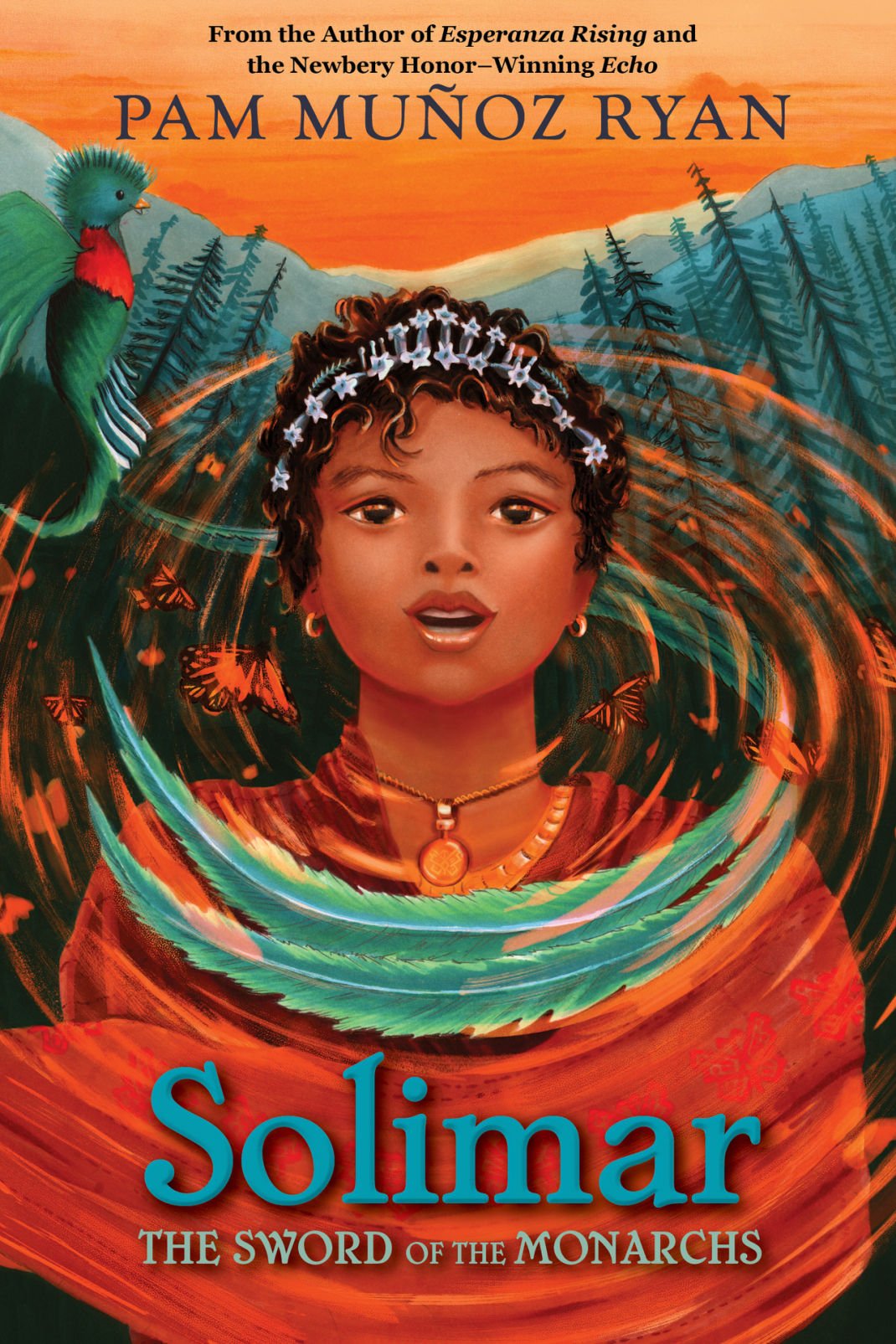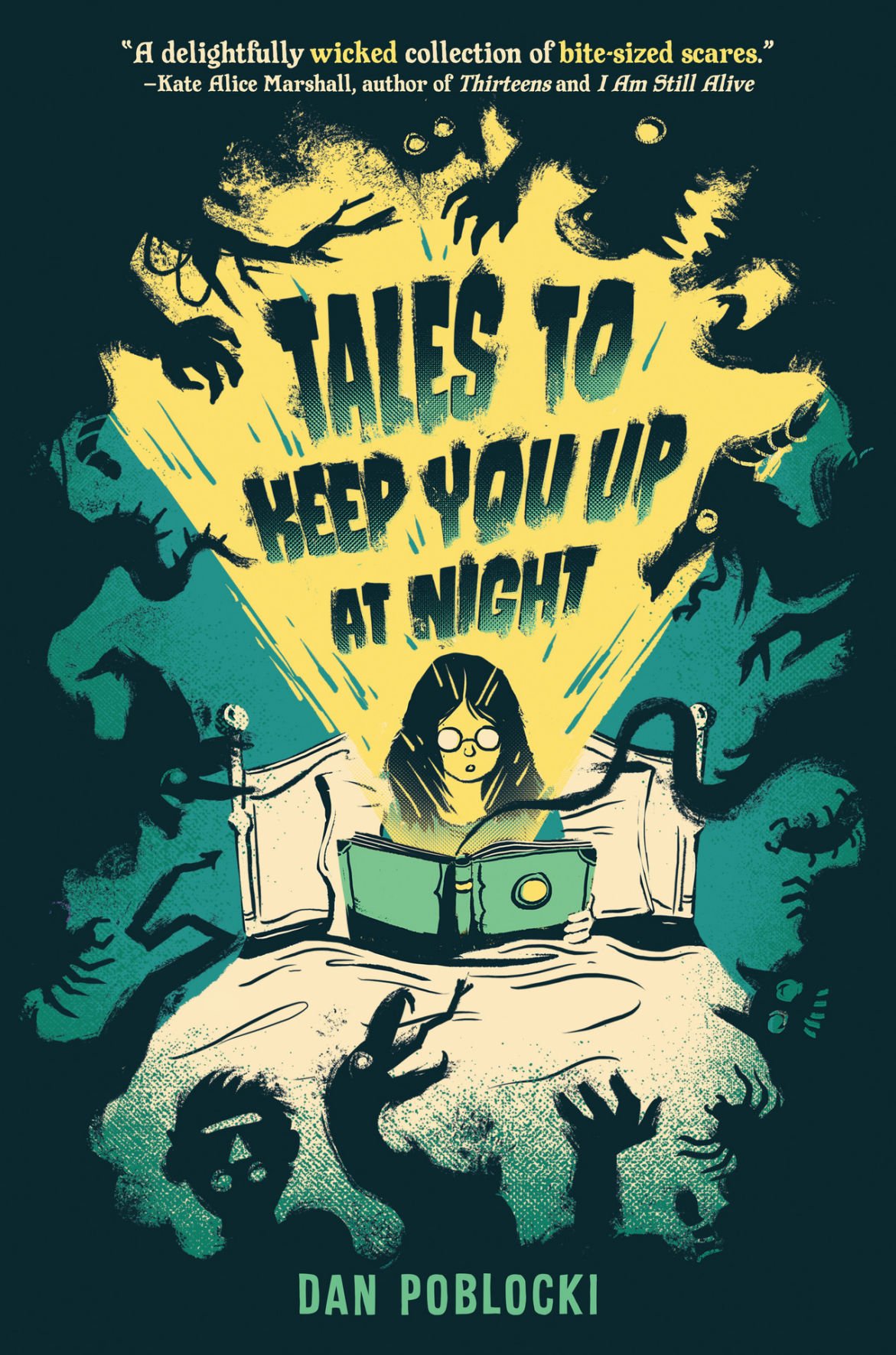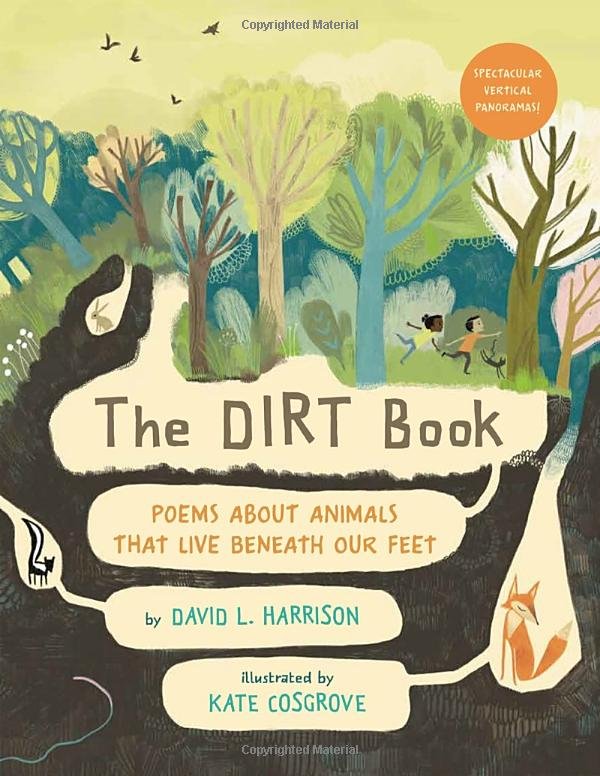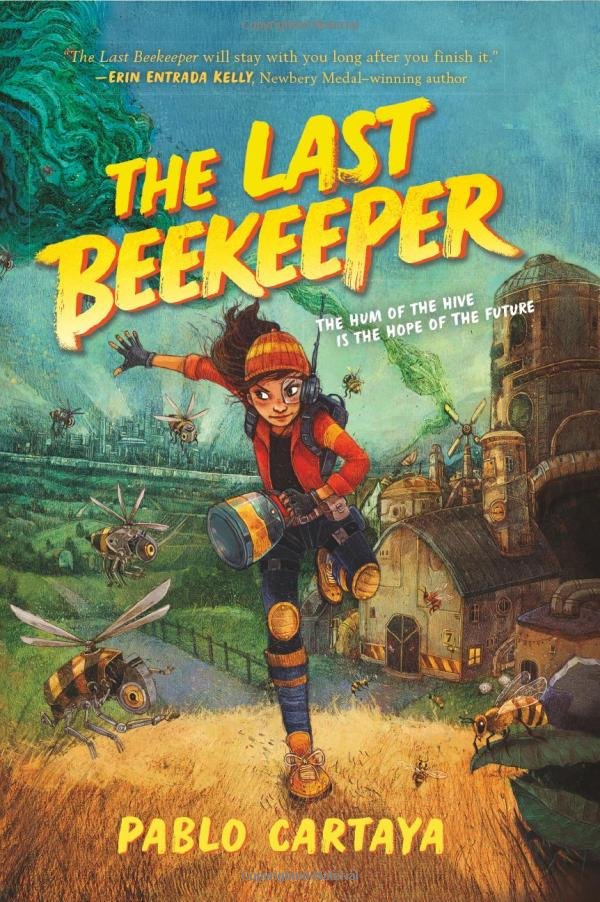Texas Bluebonnet Award List 2023-2024
Every year a committee of Texas Librarians chooses 20 books for the Texas Bluebonnet Award list and students between grades 3rd-6th around Texas are encouraged (or sometimes required) to read 5 books from the list to vote in the “Read 5, then decide” activity. Texas Bluebonnet Award Coordinator Jacqui Bridges-Sheppherd says, “Titles were chosen that allow the books to act as windows into reality and imaginary worlds while offering a view into someone else’s experiences; and mirrors that reflect a reader’s own life or culture while building their identity. This literature also keeps student’s interests in mind and provides positive reviews for parents, teachers and librarians…” This post will be a quick review of the un-Islamic and iffy content per book. More in-depth reviews are also available in individual blog posts.
Age: 9-12 years old
Type: Chapter Book-Short Stories
Content:
7 out of the 17 stories had characters or themes related to LGBTQ+ ideologies (lesbian, gay, bisexual characters)
One of the stories follows a child’s coming out story as non-binary (child previously mentions his sexuality as gay in the story)
Many of the stories have topics or themes of romance/crushes
Music and concerts are painted in a positive light
Minor degrading language (ex: stupid)
Age: 4-8 years old
Book Type: Picture Book
Content:
Mentions of slavery in the sense of the more evil side of the indigo industry
Mentions of people’s belief of protection with use of blue stones (in an informative way)
Mentions warding off evil spirits in a cultural way through use of blue dye (in an informative way)
A bit of a spiritual/mystical vibe to the whole book while still remaining informative.
Erasure of Palestine
Age: 3-7 years old
Book Type: Picture Book
Content:
The discussion of a “potentially magical” chicken in an childish way
The Shepard boy in the beginning of the story is referred to as “not so smart” but it is in hand with calling the reader smart because they go to school. He is referred to as “ugly” as well but eventually gets a glow up.
The word “heck” is used once in an exclamation (“Well, heck—the Shepard Boy hadn’t seen his reflection since all those years before in that muddy puddle…”)
The Princess is a bit sassy to her father by telling him to get out of her room but she warms up and it is chalked up to her being a moody teenager.
For half a page a few buff male palanquin carriers and the Shepard boy are depicted shirtless in a non-explicit way. (Merely in relation to cultural clothing)
Age: 8-12 years old
Book Type: Chapter Book
Content:
Mild name calling (a fox says her parents call her a “brat”, bobcat calls foxes “sneaky & disgusting)
There’s the obvious circle of life (fox eats some mice & a bobcat talks about hunting) and Haven herself is fearful of dying in the forest and there’s some scary imagery ( “…those jaws could snap closed around a little cat’s neck quite easily”). The biggest thing is an intense fight scene at the end where Haven ends up with an eye as “…bloodied mess” (you later find out it is injured beyond repair). Additionally, you can infer that a bobcat drowns (he was the antagonist so don’t shed a tear over him).
Age: 4-8 years old
Book Type: Picture Book
Content:
Ann’s mother “…wrung a chicken’s neck from her birthing bed…” (wringing a chicken’s neck is mentioned once more in the book)
Mentions of what a “woman’s role” is and “what a man’s role is”
A character in the book is drawn wearing a pride flag when talking about Ann’s belief in “…taking care of all people”
The back page speaking more on her life mentions alcoholism (it is not a part of the main story book)
Age: 8-12 years old
Book Type: Comic Book
Content:
Mild rude language (shut up, calling a kid garbage, nicknaming a teacher “the grouch” and calling said teacher a witch)
Name calling (dumb, jerk, weirdo)
Racial micro-aggressions
The five kids end up banding together to help a homeless woman living in a van with her young daughter near the school and while the gesture is heartwarming the children do lie about helping her to the adults in their lives for a while before it gets exposed. The woman ended up being a genuine and kind individual but a “stranger danger” conversation with your child would be important.
Age: 8-12 years old
Book Type: Chapter Book
Content:
Character exclaims “drat” after losing a staring contest
Character exclaims “why are those blasted birds still here?”
A little ningbing makes a few mean remarks about the brains of some of the creatures (minuscule brains, bird brains) He warms up and is nicer in the end.
Age: 7-10 years old
Book Type: Chapter Book
Content:
The Prince is depicted in drawings with women in love with him (heart eyes)
Prince would make “women—and the occasional man—swoon at his presence”
Refer to a character having “the voice like an angel” when she sings (it’s pretty)
Magic creatures (dragons, sphinxes, mutated frog-dog creature cursed by a witch)
Name calling (jerky, coward, nutty, dumb, scary cat, dimwit, bonehead, ugly, loser. Idiot is used 19 times)
“Darn” in emphasis (“pretty darn good”)
“Heck” (“to heck with my quest…”)
Gross humor: farts, “royal buttwiper”, butts, picking noses etc
Spells, wizards & witches
Belinda dresses up as a boy to become a knight because she can either be a housewife or a witch & doesn’t want to do either. She also lies to her parents a lot.
Village idiot character
Minor mentions of killing & death
Speaks directly to reader when painting adults in negative light: “adults are often evasive when answering perfectly good questions that kids ask, like “Why are you allowed to use bad words when I can’t?” “Where do babies come from?”…(pg 61) IQ booster words example sentences make fun adults. For example “when mom passes gas the smell is malodorous”. Tim calls his parents as “narrow minded” and “unsophisticated”.
Age: 8-12 years old
Book Type: Chapter Book
Content:
A spiritual element about the power/ancestors of monarch butterflies
A “good witch”
Childish magic stems holistic remedies (ex: “Wave eggs ‘round the body to displace spells” & “Camphor stops the hair from receding”
Potions (the grandma tries to use a love potion on her two cats so they can like each other)
Friendly, talking enchanted dolls
The villains of the story vanish in a swirl of magical wind after angering the ancestors of the butterflies
In the end, instead of making it possible for a princess to be leader they instead make Solimar a “regent prince”. Not in the sense of male gender identity.
Age: 10-12 years old
Book Type: Chapter Book—Short Stories
Content:
Amelia has two mothers in a lesbian relationship
Themes of witchcraft
Burning crow feathers to create a tormenting hallucination
The spirits of a witch’s ancestors seek revenge on the ancestors of the man that murder her centuries ago and torment them if they don’t “spread their story”.
A child creating living creatures from clay and then referring himself as “a god”
Themes of death
One story briefly mentions a dinner with someone’s “boss and his husband”
Minor mentioning of hanging, drowning, murder
Tarot card reading of the future
Mentioning and description of blood
Age: 8-12 years old
Content:
Goat called a “demon goat” (it’s not actually one, just an angry goat)
Refers to demons occupying objects and people (ex. Edik’s eye—more likely he has a lazy eye)
Mentions hauntings by ghosts
Monks refer to themselves as prophets who receive prophecies that must be written in “the great book” The Chronicles of Sorrowing “tells the story of what has happened and of things that might yet happen, those things which have been prophesied”
Name calling (coward, broken-eyed, fool)
Story of angel and horse swapping body parts in “a trick of destiny”
Cruelty & violence (abusive father who “beat the nonsense out of him”)
Beatryce dresses as a male monk with a shaved head throughout the whole book (for her safety hiding from the King, not due to gender dysphoria)
Refers to the devil (a scary man “sounded like the devil himself”)
War, killing & death is prevalent (a character is traumatized at the death of his parents, a character nearly kills someone, Beatryce’s brothers are killed in front of her)
An evil, ugly angel of death reveals herself to a dying soldier to tell him “it must be written down for a chance of forgiveness” the “it” turned out to be a confession of his sins (killing in the war—he talks about his killing for about 2 pages. He refers to killing children)
Beatryce is referred to as bewitched (she isn’t, just a false accusation)
Age: 5-9 years old
Book Type: Picture Book
Content:
A “what if?” of a magical elevator” to take down into the earth. (just a childish magic “what if?”)
Refers to moles as “furry demons on patrol” (demon in the sense of fiend, not spiritual)
Mentions of mating & having babies in the sense of the circle of life (nothing really explicit just: “males are needed for mating” & “they start having babies”)
Age: 7-10 years old
Book Type: Comic Book
Content:
Cartoony shirtless men (once when moths eat the teacher’s shirt and a couple of beach scenes with a character in swim trunks)
Mythical creatures (ex: werewolf)
A cat has a brain “enhanced with microchips”
Weird cartoony drawing of an evil scientist’s toenails
Prophecy for “the one who will save the moon”
A drawing of a beach scene where one character is in swim trunks for 3 pages and there are women’s backs depicted (though they are very small and hard to see and nothing with the men or women is intended to be proactive )
Age: 8-12 years old
Book Type: Chapter Book
Content:
Minor themes of “evolution of humanity” through technology (Nerolinks, humanity “evolving” without the use of nature)
Speaks of man made created animals
Yolanda’s sister has a male love interest it is mentioned that she has feelings for him. They interact and hug in the end. Mentioning of “googly eyes” but nothing more.
Arelis calls her older brother “Stink Face” (in teasing endearment)
Robotic augmentation on humans (some cyborg like limbs but the more complicated things like half-human half-robots as super soldiers)
Age: 8-12 years old
Book Type: Chapter Book
Content:
Sai doesn’t speak highly of her dad, referring to him by his nickname “Mud”. Her last name is Mudawan so it’s possible to have stemmed from that. Later, Sai begins to understand her father’s actions and has a bit more mercy for him. She doesn’t completely antagonize him as she knows he would never force her to do anything she didn’t want nor hurt her.
Sai begrudgingly helps her father commit forgery and other crimes
East Asian spiritual elements: being blessed/cursed by spirits, selling souls to demons, stories of a monster eating misbehaving kids.
People constantly bow (not in prostration) to elders in a sign of respect
Sai bows (not prostration) to a shrine; others refer to praying to shrines.
Sai makes an altar to give offerings to and to thank the spirits
Magic dragons
Mentions of gambling, card playing and pubs
Name calling and unsavory language come in made up languages as well as English. (tripe, idiot, stupid, dog dung etc etc)
Two mentions of children out of wedlock. One was unfaithful to his wife. (no graphic information was given for either instances. Both are plot devices)
Sai says “I could kiss you!” to a boy in excitement (nothing happens though, he thought it was gross)
Age: 4-8 years old
Book Type: Picture Book
Content:
None
Age: 8-12 years old
Book Type: Chapter Book
Content:
Magic school so the usual childish magic: magic creatures, spell casting, elixirs, good luck charms, enchanted objects and magical powers.
Muslim students literally practice shirk & magic
A Hijabi student has 2 moms & enchanted hijab to help her remember things (+ other magical things in the story)
A Hijabi student has a magic bejeweled lamp that she keeps close for her “djinn friend” to come and stay in because she’s “a nice one”.
Summoning spirits
Wearing crystals for protection
Prophecies, looking into the future & past
Card reading
Conjurors go to the underworld with “divine responsibility” to guide the dead
Magical Christian saint statues & doing rituals for removing spirits
Referring stars in a spiritual way
Possibly 2 non-binary characters
Some creatures are “divine” in a spiritual sense
Gambling & bets
Mentions of death
Age: 8-12 year olds
Book Type: Chapter Book
Content:
Excessive name calling (things like: revolting, troll-faced, nauseating, twerp, fool) The two brothers make up in the end of the book and are much nicer, so a lesson is learned.
Minor language all said once in the book (dang, stupidity, shut up)
Alluding to swearing 2 times in the book (Aldo says his father said “swear word, worse swear word laptop”. The literal phrase “swear word” is used)
Alluding to swearing once when Nick shouts at the boys one time where there are … between the sentence or [onion chunk] (a metaphor explained in the book, it was funny)
At one point one of the boys reassures a female ghost that when they can “look right through her” they mean she is translucent and not that they can see her underwear
Two ghosts are married in a heterosexual relationship and call each other silly nicknames once at the end at their reunion (ex: Sweety-Petey)
Age: 10-12 years old
Book Type: Chapter Book
Content:
The main character is Hindu so she occasionally mentions Hindu gods and goddesses. Twice she mentions praying to them at a temple or feeling similar to them (ex: “I feel like the goddess Shakti…”)
Mentioning of idols
Mentioning of palm reading
Her father believes in the “Three Wise Monkeys (“see no evil, hear no evil, say no evil”)
Bracelets and amulets for protection
Her best friend is a Muslim girl who takes Bollywood dance classes and is friendly with the main character’s teenage brother (there is a 4-5 year age gap and it is more of a sibling dynamic). The Muslim girl actually isn’t an awful character even mentioning once how she prayed to Allah to bless her friend’s family when they are going through hardships.
Mentioning of alcohol
Mentioning of death and killing
Mentioning of the caste system
Age: 4-8 years old
Book Type: Picture Book
Content:
None



















